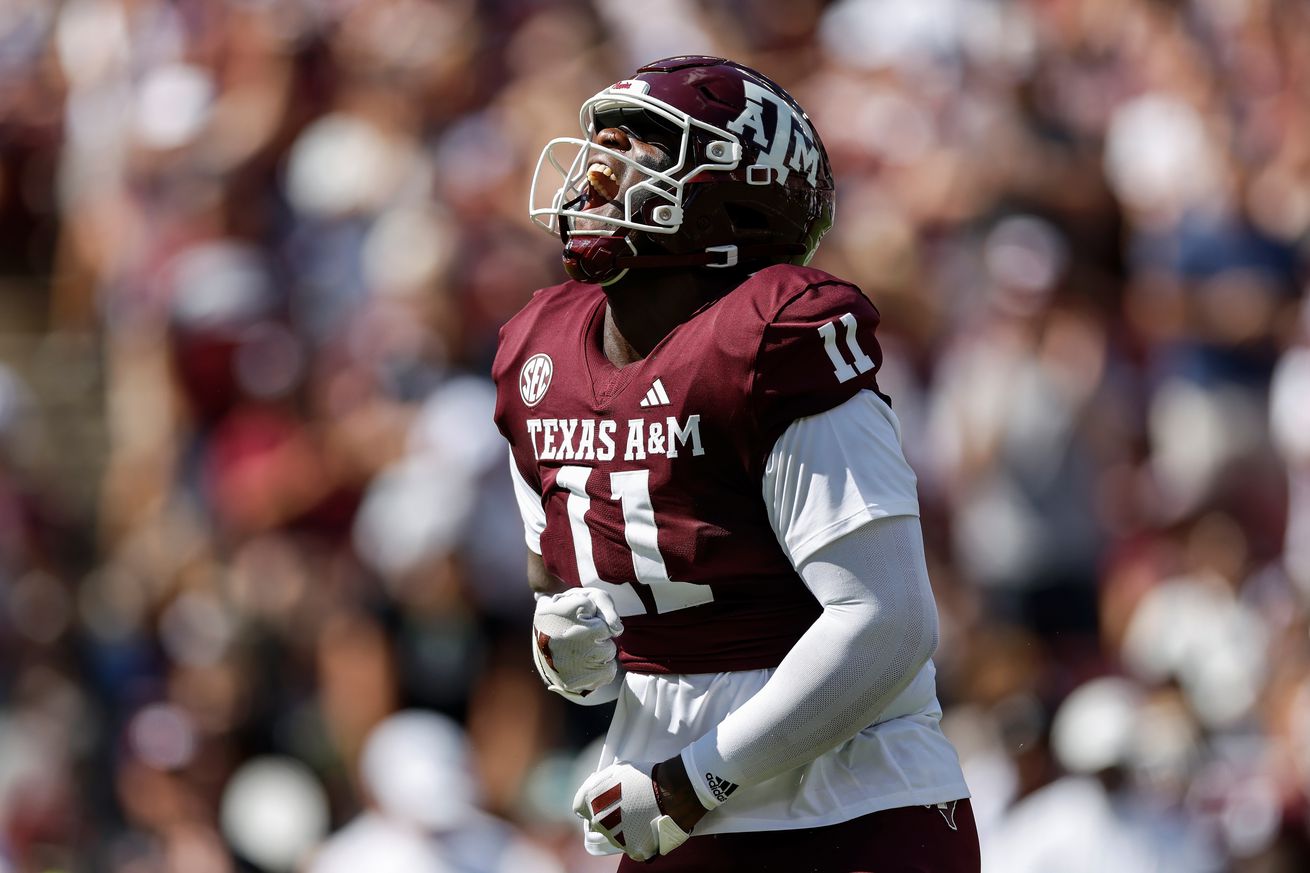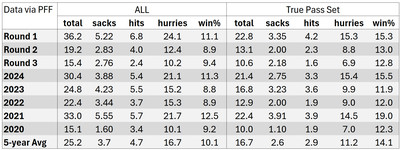
History says to limit your expectations in year one, but that doesn’t mean the Falcons shouldn’t take the swing.
How much help would a first-round edge provide for the Atlanta Falcons in 2025?
It’s a question many of us are thinking about. However, history says very little.
The Falcons have seemingly missed the boat for landing a top EDGE rusher in free agency, which Raheem Morris revealed he anticipated during his interview with team reporters at the NFL Annual League Meetings. Morris noted that based on the team’s current situation (Kirk Cousins debacle), they would’ve been foolish not to be prepared to walk out of free agency without marquee names.
Yes, Trey Hendrickson and Micah Parsons are technically still available via trade, but if this is Morris’s message during these players’ period of availability, it’s clear he’s not counting on landing either. So what is he counting on?
Texas A&M’s Shemar Stewart and Nick Scourton have not yet participated at their Pro Day.
Stewart ran a 4.59 40-yard dash at the NFL Scouting Combine.
Scourton was seen talking to Atlanta Falcons HC Raheem Morris. pic.twitter.com/IRylnow96Q
— Ronald Harrod Jr. (@ronharrodjr) March 27, 2025
Stop me if you’ve heard this before, but the Falcons have a young group of defenders in the building that they believe in. Ruke Orhorhoro, Brandon Dorlus, and Bralen Trice have been cast as the defenders in this recurring storyline. However, Trice is the only one classified as an EDGE defender and the only one who didn’t play in 2024—barely.
The team needs more edge talent, and that’s why 2025 has been relentlessly discussed as the year the Falcons draft an edge rusher with their first-round pick.
But how much impact should the team realistically count on from a Day 1 rookie and Trice (a pseudo-rookie) in 2025? I compiled a table using PFF data showing pass rush production from 1st, 2nd, and 3rd round draft picks from the past 5 years–rookie seasons only. The data also separates all dropbacks from true pass sets (eliminating plays that utilize screens, play action, or rollout concepts). The results are as follows:

The game isn’t played on a spreadsheet, but the numbers can’t be ignored. Drafting a pass rusher is like investing in an index fund, where instant gratification is rarely an outcome. The data makes a few other obvious points, the main one being to draft a pass rusher on Day 1.
Production is relative. A season total of five sacks is subpar compared to the best pass rushers in the league, but that’s the average return for top draft prospects. I expected first-round picks to be the most productive rookie group. They were the largest group in the data pool (23), and Day 1 draft picks typically got more playing time and opportunities than pass rushers taken on later days.
The gap from Day 1 to Day 2 was a foreseen outcome. However, I didn’t expect second and third-round pass rushers to be statistically nearly indistinguishable. Factors like over-drafting and overweighted data are present, but overall, the data speaks to the difficulty rookies face when transitioning to the next level. The less talented the player, the more difficult that transition can be, and this is one of the toughest positions to evaluate.
The gap between second-round and third-round edge rushers isn’t all that significant, and these results could also lead one to believe that trading up on Day 2 isn’t worth the trouble.
Day 2 rookies are lucky to see 100 pass rush snaps in their first year, and those reps are priceless for rookies. Giving rookie pass rushers as much as possible is a priority, but you can’t overexpose them too early. Managing them is a delicate balance, which is why the best teams stockpile and draft edge rushers every year. Defenses that can attack the quarterback consistently are constantly updating their queue with new pass rushers.
Mykel Williams in the SEC championship game (he will be 20 years old until June) https://t.co/M2TmLY9iSn pic.twitter.com/UpUGIeG8mP
— Theo Ash (@TheoAshNFL) February 15, 2025
The Falcons have taken swings on Day 2 and Day 3 during Fontenot’s tenure, and their results align with that somewhat complacent philosophy. Atlanta cannot hope to land a tier-one pass rusher if they don’t pay the price. Bralen Trice shouldn’t be dismissed, but he shouldn’t have unrealistic expectations put on him in his first year of action, either.
Drafting an edge rusher in the first round will always be the most effective way to land an elite one, and it’s time to take a shot. Trying to make a five-star meal out of five-dollar ingredients has burned Fontenot four years in a row.
Rookie pass rushers are not high-level producers; they are, at best, pieces that can elevate a room and generate a spark in pass rush situations. Rookie seasons like Jared Verse and Micah Parsons’ are statistical outliers, not realistic benchmarks. Everyone in Atlanta should prepare for a four-sack outcome, or worse, if the team adds a pass rusher. However, don’t let sack totals overshadow promising metrics and indicators (win %, total pressures) that point toward the defender being on the right track.
These statistical realities are why teams are intrigued by players like Mykel Williams and Shemar Stewart. The odds are that even the most refined and polished-looking college pass rusher (Latui Latu) will need a year to adjust before becoming effective, so why not take a shot on players who are athletic outliers? Sometimes, you get Travon Walker; other times, you get Tyree Wilson.
Building up this room will be a process, but that process won’t truly begin until the Falcons have added a player who can be a foundational piece. The question is, can they find that person in this year’s NFL draft?
